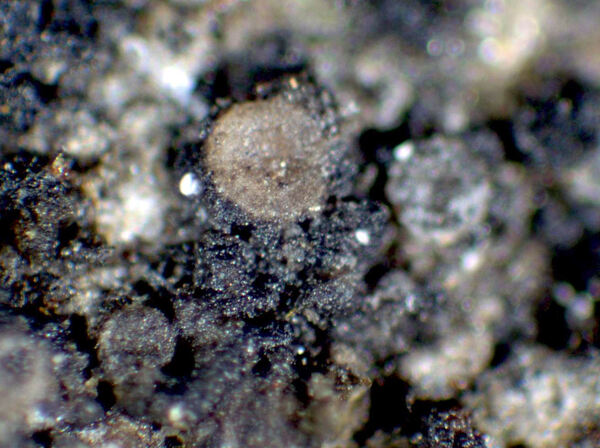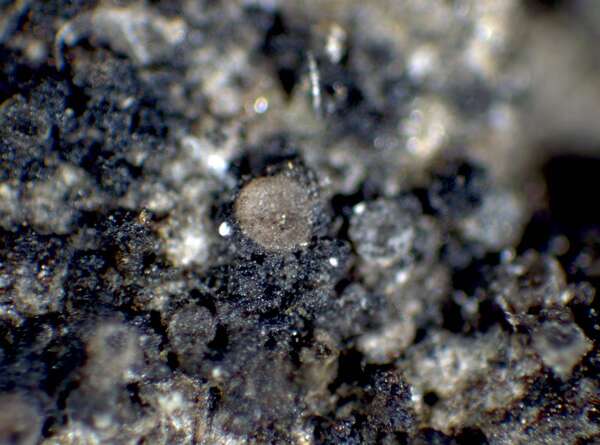Gyalidea lecideopsis (A. Massal.) Vězda var. lecideopsis
Lettau ex Vezda, Folia Geobot. Phytotaxon., 1: 312, 1966. Basionym: Gyalecta lecideopsis A. Massal. - Miscell. Lichenol.: 39, 1856.
Synonyms: Gyalecta hyalina Hepp; Gyalecta stigmatoides (Nyl.) Boistel; Gyalidea albocrenata (Arnold) Lettau; Lecidea stigmatoides Nyl.
Description: Thallus crustose, endosubstratic or thinly episubstratic, often inconspicuous and poorly evident, smooth or finely granulose, grey-white to yellowish grey. Apothecia 0.2-0,6 mm across, with a concave, dark reddish brown, dark brown to black disc and a smooth, crenulate or radially split, mostly black to brown proper margin (often turning pure white in dry sites). Proper exciple 50-60 µm wide laterally, dark olive-brown in outer part, colourless or paler within; epithecium brown-green; hymenium brown-green in upper part, colourless in lower part, 100-130 µm high; paraphyses mostly simple, to 1 µm thick, not swollen at apex; hypothecium colourless or pale yellowish brown. Asci 6-8-spored, thin-walled, apically thickened, with a small ocular chamber. Ascospores muriform, hyaline, ovoid to broadly ellipsoid, (17-)22-30(-35) x (10-)12-15 µm, without a distinct perispore. Photobiont chlorococcoid, Cystococcus/Leptosira-like. Spot tests: K-, C-, KC-, P-, UV-. Chemistry: without lichen substances.
Growth form: Crustose
Substrata: rocks
Photobiont: green algae other than Trentepohlia
Reproductive strategy: mainly sexual
Commonnes-rarity: (info)
Alpine belt: absent
Subalpine belt: extremely rare
Montane belt: extremely rare
Dry submediterranean belt: absent
Humid submediterranean belt: absent
Padanian area: absent
pH of the substrata:
1 2 3 4 5
Solar irradiation:
1 2 3 4 5
Aridity:
1 2 3 4 5
Eutrophication:
1 2 3 4 5
Poleotolerance:
0 1 2 3
Altitudinal distribution:
1 2 3 4 5 6
Rarity
absent
extremely rare
very rare
rare
rather rare
rather common
common
very common
extremely common
Loading data...
Occurrence data
Predictive map
Growth form: Crustose
Substrata: rocks
Photobiont: green algae other than Trentepohlia
Reproductive strategy: mainly sexual
Commonnes-rarity: (info)
Alpine belt: absent
Subalpine belt: extremely rare
Montane belt: extremely rare
Dry submediterranean belt: absent
Humid submediterranean belt: absent
Padanian area: absent
pH of the substrata:
| 1 | 2 | 3 | 4 | 5 |
Solar irradiation:
| 1 | 2 | 3 | 4 | 5 |
Aridity:
| 1 | 2 | 3 | 4 | 5 |
Eutrophication:
| 1 | 2 | 3 | 4 | 5 |
Poleotolerance:
| 0 | 1 | 2 | 3 |
Altitudinal distribution:
| 1 | 2 | 3 | 4 | 5 | 6 |
Rarity
absent
extremely rare
very rare
rare
rather rare
rather common
common
very common
extremely common
Loading data...
Occurrence data
Predictive map








